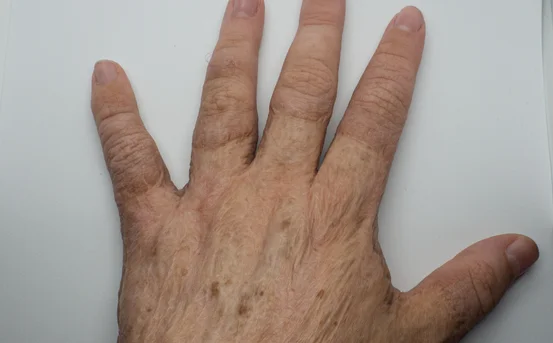Introduction
Tendons are the strong, fibrous connective tissues that attach muscles to bones and play a crucial role in enabling movement. Whether you’re lifting your arm, walking, or gripping an object, tendons are constantly at work to transmit force and coordinate motion. However, when tendons are injured due to trauma, overuse, or underlying health conditions surgery is sometimes required to restore their function and relieve pain.
Tendon injuries can occur in any part of the body but are most common in the hands, shoulders, knees, and ankles. When conservative treatments like rest, medication, or physical therapy fail to bring relief, tendon surgery becomes a viable option. Depending on the severity, type, and location of the tendon damage, different surgical techniques are used.
Tendon surgeries are typically categorized based on the problem being addressed, such as repair, release, transfer, or grafting. Each type of tendon surgery serves a specific purpose and is tailored to the patient’s individual needs. Here, we will explore the most common types of tendon surgery that are performed to restore mobility, reduce pain, and improve quality of life.
Types of Tendon Surgery
- Tendon Repair Surgery :- Tendon repair surgery is the most common type of tendon operation, used to fix a torn or severed tendon. This usually occurs due to an acute injury, such as cuts or sports-related accidents, where the tendon is either partially or completely ruptured. In this procedure, the surgeon reconnects the two torn ends of the tendon using strong sutures. The surgery can be performed through an open incision or minimally invasive techniques, depending on the location and severity of the injury. Tendon repair is most effective when done soon after the injury occurs, as waiting too long can lead to tendon shortening or scar tissue development, which makes surgery more complex. Common areas for tendon repair include the Achilles tendon in the heel, flexor tendons in the fingers, or the rotator cuff tendons in the shoulder.
- Tendon Transfer Surgery :- Tendon transfer surgery involves moving a healthy tendon from one part of the body to another to replace a damaged or non-functional tendon. This type of surgery is often used when a tendon is beyond repair due to trauma, nerve damage, or degenerative disease. The donor tendon, which usually performs a similar function, is rerouted and attached to the bone or muscle where it’s needed. This procedure is particularly helpful in restoring lost movement in people with nerve injuries, such as those caused by spinal cord trauma or stroke. It can also be used in cases of congenital disabilities or paralysis. For example, in hand surgeries, a working tendon might be transferred to enable grasping or finger extension, thereby improving hand function significantly.
- Tendon Grafting Surgery :- Tendon grafting is a more advanced procedure used when there’s a significant tendon loss or damage that cannot be repaired directly. In this surgery, a piece of tendon is harvested from another part of the patient’s body (autograft) or from a donor (allograft), and is used to replace or bridge the damaged area. Grafting is commonly performed when previous tendon repair surgeries have failed, or in cases of severe injury where the tendon has retracted too far for a simple repair. The goal is to recreate a functional connection between muscle and bone to restore normal movement. Tendon grafts are frequently used in reconstructive hand surgeries and some orthopedic cases like anterior cruciate ligament (ACL) reconstruction.
- Tendon Release Surgery :- Tendon release surgery is typically done to relieve tension or tightness in a tendon that restricts movement or causes pain. This type of surgery is often used to treat conditions such as trigger finger, where the tendon gets caught in a sheath and causes the finger to lock or snap. It is also used in cases of muscle contracture due to cerebral palsy or stroke. In this procedure, the surgeon makes a small incision and releases part of the tendon or the surrounding sheath to allow freer movement. This type of surgery is usually quick, often done on an outpatient basis, and has a relatively short recovery time. It is a highly effective treatment for people whose daily functions are affected by tendon tightness or mechanical locking.
- Arthroscopic Tendon Surgery :- Arthroscopic tendon surgery is a minimally invasive technique used to treat tendon injuries inside joints, particularly in the shoulder, knee, and ankle. This technique involves inserting a small camera (arthroscope) into the joint through a small incision, allowing the surgeon to view the inside of the joint and operate using tiny instruments. This method is often used to repair tendon tears, clean up inflamed tissue, or perform tendon debridement (removal of damaged tendon fibers). Arthroscopic tendon surgery offers the benefits of smaller incisions, reduced pain, faster healing, and lower risk of infection. It’s commonly used for procedures like rotator cuff repair or treating patellar tendonitis.
- Reconstructive Tendon Surgery :- Reconstructive tendon surgery is a broader category that involves complex procedures to rebuild or restore severely damaged tendon systems, usually after multiple failed surgeries, trauma, or chronic degenerative disease. These surgeries often combine multiple techniques such as repair, grafting, or tendon transfer. This type of surgery is more commonly seen in patients who have had long-standing tendon disorders or congenital deformities that impact movement and function. It may also involve the use of synthetic materials, scaffolds, or biologic enhancements like platelet-rich plasma (PRP) to promote healing. Recovery from reconstructive surgery can take longer and may require extensive rehabilitation, but the outcomes are often life-changing for those who have suffered years of dysfunction.
Conclusion
Tendon surgery plays a vital role in restoring function, mobility, and quality of life for people suffering from tendon injuries or disorders. Depending on the type and severity of the condition, different surgical options are available—each with its own specific technique and purpose. Whether it’s repairing a simple tear or reconstructing an entire tendon system, these surgeries aim to reduce pain, restore strength, and enable patients to return to their normal activities.
Understanding the types of tendon surgery helps patients make informed decisions about their treatment plans and recovery. With advancements in surgical methods and rehabilitation, the success rates for tendon surgeries have improved significantly, offering hope to many who once believed their mobility was lost.























